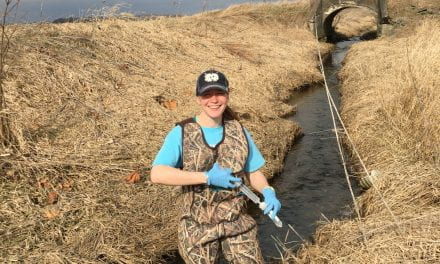
Mullins Branch and Restorative Success on the University of Arkansas Campus

Mullins Branch, a creek flowing to a tributary of the White River, has faced many challenges amidst the bustling life of the University of Arkansas campus. Once afflicted by sediment erosion, high turbidity, and pollution, the creek underwent a significant restoration in August 2012, led by the Watershed Conservation Resource Center (WCRC). This project has since led to remarkable improvements in the creek’s health and ecosystem.
Since the completion of the restoration, Mullins Branch has seen stabilized banks, improved water quality, and a boost in biodiversity. These improved qualities come from the implementation of riparian buffers with native vegetation, serving as natural filters and streambank stabilizers.
Mullins Branch acts as a living laboratory for students, a recreational spot for the campus community, and a developing ecosystem. The growing abundance of toads and lizards inhabiting the creek area is evident to the students who spend time at Mullins Branch or pass through on their daily commute.
Currently, the creek’s success is further supported by ongoing volunteer efforts from the university and local organizations.
Regular clean-up events, hosted by the WCRC and the Office for Sustainability, help to maintain the creek’s cleanliness by removing litter from foot traffic and football games and removing any invasive species.
Environmental science students also participate in class labs at the branch, providing semester-by-semester data for tracking the creek’s turbidity levels.
Periodic planting events, hosted by the Horticulture department and the WCRC, and habitat improvement projects have played significant roles in enriching the ecosystem and raising awareness about watershed health.
Looking forward, the university and its partners plan to enhance the creek’s health and community engagement with new initiatives. These include integrating more green infrastructure like rain gardens and permeable pavements, developing the bike trail system around the creek, and expanding research initiatives to study the long-term ecological impacts of campus patrons on the branch.
The restoration and continued care of Mullins Branch Creek serve as a model of successful urban ecological restoration and community involvement.
Article written by Caroline Cheek
Photo courtesy of the Watershed Conservation Resource Center









